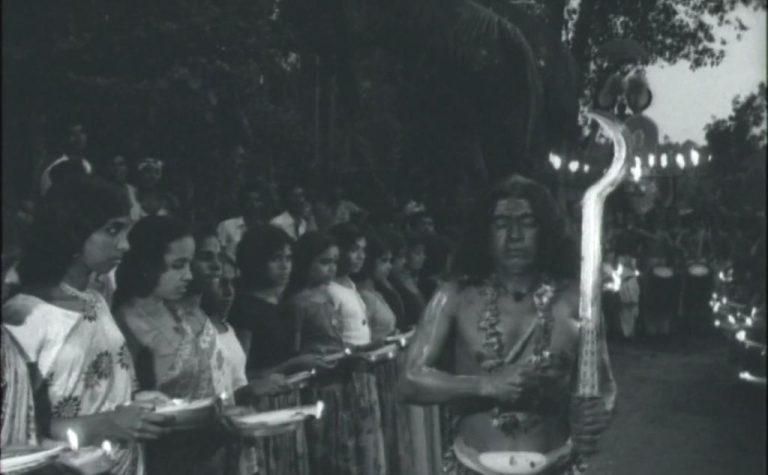The Success Of Animal Speaks: “Are you brave enough to watch it?” This is what the promos for one of the biggest box office hits at the Indian box office this year, “The Kerala Story,” read. Sudipto Sen’s propaganda film certainly wasn’t’ an outlier when it came to dangerously mixing fictionalized narratives with incidents drawn from reality. But the crushing irony of mainstream Hindi films lately has remained in how they use one-noted feminist tropes (Sen’s film included lines such as “my body, my rules”) that pretend to safeguard women while using the same notions of emancipation to provoke a hateful response.
Of course, there’s a certain kind of moral high ground a casual viewer feels while rooting for the stories of such women. The makers realize this, too. But watching an emotionally exploitative film doesn’t help override that knowledge either. Instead, it further compounds and sanctions the line separating suspension of belief and disbelief.
As a nation, we have always watched movies to vicariously live through the hijinks of our favorite on-screen heroes. But as the far-right wing forces in our country have grown more authoritarian, the notions of bigotry now seem to envelop every kind of content we consume. The red-herring, then, is the convergence of ideology penetrating the communally shared space of cinema. It arrives at a time when a vindictive monoculture has blanketed over the populace. One that reeks of a bigoted hierarchical system in place. One that chokes the prospects for representational intersectionality at any level because the very idea threatens the established status quo.
Sandeep Reddy Vanga’s latest film, “Animal,” made history by being the second-biggest Bollywood opening of all time. The film has made a lot of money in the domestic market despite coming under wide criticism for its ‘overtly indulgent’ and ‘misogynist’ storytelling. In the film, Ranbir Kapoor plays a man hopelessly devoted to his industrialist father, Balbir Singh (Anil Kapoor). But when a tragedy ensues, he lets loose his dormant seeds of masculinity to embrace a more hot-headed Daddy’s boy persona – one that allows him to go around as an indestructible and conscience-free terminator. He fires guns, hires a team of ultra-fit men to be around, and, of course, channels his unhinged misogyny while masquerading it all under his “alpha-male” piety.
Vanga’s 202-minute film opens with introducing Ranbir Kapoor as a superstar. But unlike most of the successful vanity projects we’ve gotten lately, “Animal” isn’t structured to serve and compound the myth of the star at its center. It explores the imagination of the archetypal Indian masculine figure – and, by extension, that of a hypermasculine Indian film hero – in a way that consistently comes across as shocking, exciting, ridiculously bombastic, and sometimes even incomprehensible. It asks the audience to buy the central father-son dynamic so desperately that it eventually makes one wonder whether Vijay is faking his love and obsession for ‘papa.’ Thus, the film manufactures conflict to make us root for his bloody quest for revenge, aimlessly taking us through his desperate rescue from a life of stupefaction.
In one scene, Vijay’s wife, Geetanjali (Rashmika Mandanna), justifies the man’s ‘disoriented’ behavior by saying how he’s been sprayed with chemicals by the doctors. She also explains her supportive behavior towards her husband because he was always there during the tough parts of their marriage. However, the director refuses to show the dynamics of this relationship. Vanga’s idea of establishing and fleshing out the central relationship starts and ends with their sex life. It’s this regressive approach that goes on to become a function of all the other scenes that feel repugnant, like the one where a wounded Vijay flaunts his physically stitched-up diaper-wearing courage by mocking his wife for making a big deal about changing four sanitary pads a month.
Not only do these scenes come across as repugnant and misogynistic in isolation, but having a third person react to these remarks normalizes this sort of behavior. It’s when the regressive packaging keeps getting oh-so matter-of-factly addressed that makes the difference. Oh, look. One of his bodyguards standing by the side just chuckled? Relax, it’s not supposed to be taken seriously. It’s playful. Oh, it’s sexy.

It’s not that Bollywood hasn’t had the problem of glorifying such problematic men on the big screen. For instance, the Emraan Hashmi films through the 90s and early 2000s heavily featured similar portrayals of toxic relationships. Most of the Mahesh Bhatt films that became a staple for the actor revolved around themes of obsession and toxic revenge, echoed through a dark kind of eroticism. But this sort of portrayal had a distinct mood as it tapped into a specific type of masculinity; it acted like a counter-movement against the more amplified and heightened version of films dominating the mainstream space, mainly starring actors such as Salman Khan.
Hashmi’s films then acted as a great alternative to the superstar era, which was then at its peak. The kind of hypermasculine version Vanga’s cinema ascribes to has now become the widespread norm, one that’s replicated and morphed into the cultural landscape. One that caters to the kind of intolerance that’s sheathed over the Hindi heartland. Forget about showing the consequences of vile actions; now, you’d have to uphold violence in order to even make declarations of love. As the film puts it, “It’s a man’s world,” and if it takes one to predate back to pre-civilization to justify their vile territorial instincts, then so be it.
Of course, it wouldn’t be right to expect a nuanced exploration of love or masculinity from Vanga. But the thing with “Animal” is that it feels so conflicted about its own bearing that it comes across as just being one-notedly provocative. In one scene, Vijay claims himself to be a director when his son reminds him that he’s instead the hero. Perhaps the better meta-reading of the film would be that, but Vanga’s temptation to brush over the broad stroke attributes of toxic masculinity without even remotely examining its roots renders that reading futile. Had the film been consistent at building this altar ego of the director, however, twisted that may be, it would’ve remotely made the overbearing runtime of the film somewhat bearable.
But when the setup of a company called Swastik Steel with quasi-Nazi iconography gets distinguished by the lead for the religious meaning behind it, the film only comes across as an annoying nag to the ‘liberals’ watching it. A weapons dealer proudly introduces his state-of-the-art, India-made machine gun in a closeup as “Atma Nirbhar Bharat.” Later, a Muslim mole and a barbaric Muslim villain (who coerces one of his three wives into having blood-splattered sex) get shoehorned into the second half. An all-Sikh security further compounds this inflated and vile notion of manhood, helping the Hindu lead to take down the Muslim baddy. It’s here where the film also paints a much-celebrated victim complex. A revenge arc that stimulates the national mood while virtue signaling to the crowd that our alpha male would eventually reclaim whatever remains.
In my opinion piece about cinema of provocation earlier this year, I noted how more and more filmmakers are turning reactionary in their approach to storytelling. The mainstream audience has grown so determined to enjoy a film that they’d even take a shapeless sociopath’s word as long as it caters to the shock value. In such a scenario, ‘critiquing’ a film like “Animal” would only cement the justification that drove the filmmaker to make it. That also explains why every frame in the movie oozes with ugly bitterness and rage at the cost of getting deep into the lead’s dubious powers of persuasion.
But it’s one thing to not take the film seriously in isolation and another when it comes to examining what its box office success would further unleash. Following the discourse around Vanga’s film in the past few days, an old archival interview footage of Aamir Khan started circulating over social media. In it, the actor poignantly explains how non-talented directors use violence and sex as an excuse to make their films work. While the interview seemed quite old, people drew an uncanny comparison between the stark remarks and Vanga’s recently released film.
In any country, and especially in India, the age group between 18-25 often determines the eventual fate of a film at the box office. People of this demographic grew up watching Aamir in ‘Satyamev Jayate’ on television. That was a time when the actor channeled his tolerant superstar persona through the kind of social responsibility that once drove the media into a space of being the true watchdogs of the national conscience. It’s no surprise that this sort of moral and social responsibility soon began to threaten the far-RW groups, which increasingly started imposing their twisted form of ultra-nationalist and authoritarian spin to cloud the media.
Aamir himself became one of the many victims of this growing medley of feral rage and bigotry. His last film, “Lal Singh Chaddha,” became a glaring target of this pervasive mood. Films like “Animal” now seem very much a function of the emotional and creative bankruptcy that stems from this vacuum. That’s perhaps why one of the most memorable scenes from the former film was when Laal abruptly stopped his country-wide run, only to exhale, “I’m tired.” It hit differently from the same moment in “Forrest Gump.”
The scene came after we watched the man pass through a prodigious banner that marked the arrival of the country’s new leader in the running montage. The placarded visual that hovered over him has now clouded every inch of our waking lives. But instead of echoing this growing disenchantment, in the subsequent year alone, we’ve seen an avalanche of mainstream films that not only barricade but also provoke the sentiments that breed from that image.
Amidst this, the kind of voice that throws light on the sort of impact such content can have on the impressionable minds of the youth has been markedly absent. In this scenario, such filmmakers not only permeate the national mood through their films but go beyond just tapping into the dormant vile side that we usually keep caged within. It becomes a roaring declaration that compounds the sort of machismo and plaguing virility that’s driving the roadmap of this very ideology. It ceases just to be an extension of a filmmaker’s subjective projection of the world but an alternative reality that’s become the state-sponsored truth.






